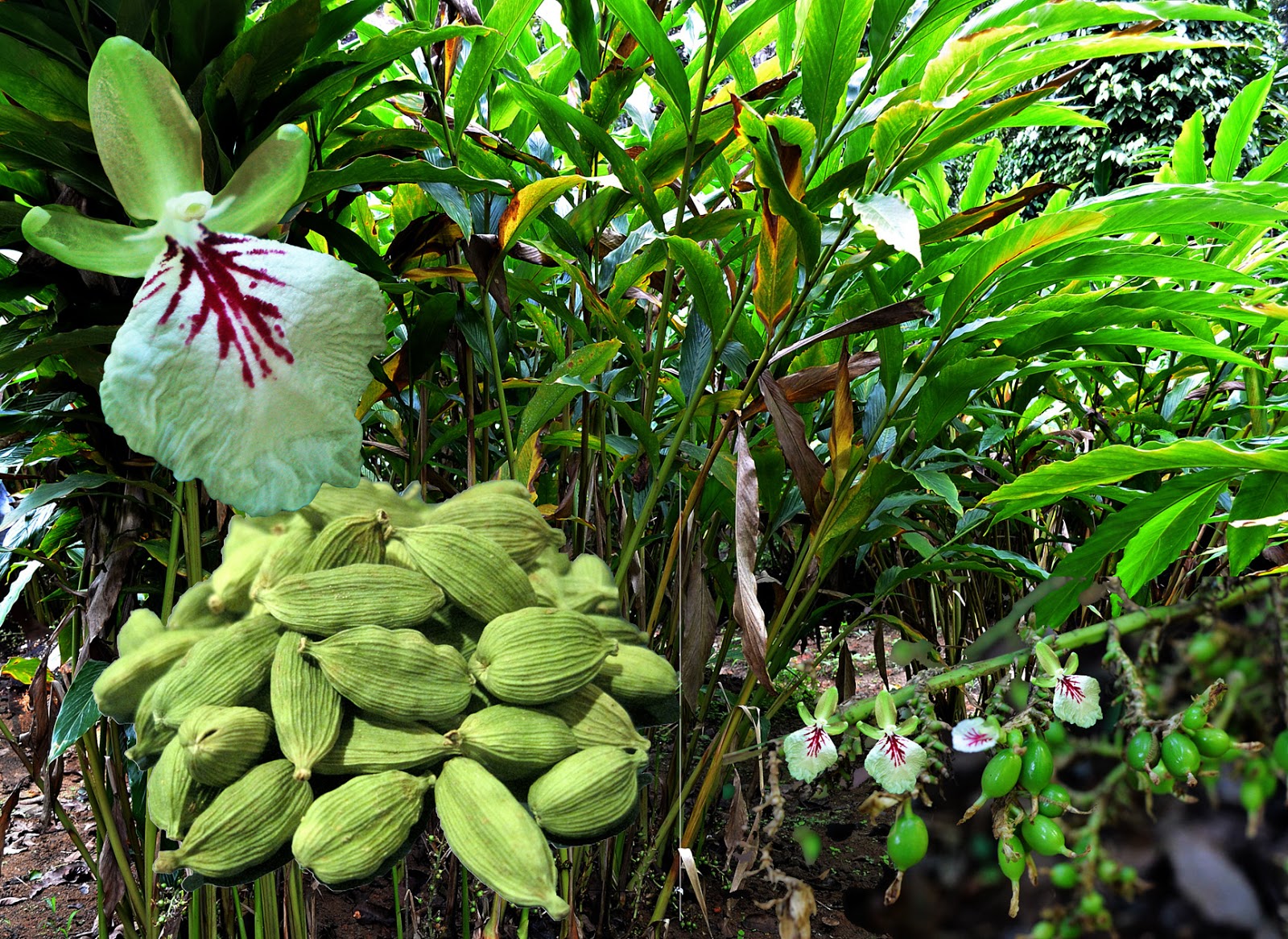
Cardamom
Elettaria cardamomum
Basic Information
🌿 Family: Zingiberaceae🗺️ Zone: 10-12
Other Names:
- Green Cardamom
- True Cardamom
🌡️ Ideal Temperature : 65°F – 95°F
🔥 Heat Tolerance: Up to 100°F
❄️ Cold Tolerance: Down to 50°F
🌱 Type: Perennial
Layers
- Herbaceous
Description
Cardamom (*Elettaria cardamomum*) is an herbaceous perennial native to tropical regions of India, Burma, and Sri Lanka. It forms clumps up to 5.5 meters (18 feet) tall, with lush, bright green, lance-shaped leaves up to 60 centimeters (24 inches) long, arranged alternately on pseudostems. The plant produces white, butterfly-shaped flowers with reddish-purple markings, occurring in clusters near the base on stems up to 1 meter (3.3 feet) long. The fruit is a light green, three-sided capsule containing 15-20 aromatic black seeds.
🌞💧 Sun and Water Requirements:
Cardamom thrives in partial shade to full shade conditions, preferring loamy, well-draining soil with an acidic pH. It requires consistent moisture, so regular watering is essential to keep the soil evenly moist but not waterlogged.
✂️🫘 Methods to Propagate:
Propagation is typically achieved through division of rhizomes. This should be done during the warm season, ensuring each division has at least one healthy shoot and a portion of the root system.
🧑🌾👩🌾 When to Harvest:
The plant begins flowering at 2-3 years of age, with white flowers appearing in spring and summer. The fruiting period is approximately 120 days after flowering. Harvest the pods just before they fully ripen to maintain their aromatic qualities.
Purpose
- **Edible:** The seeds are widely used as a spice in culinary applications, imparting a warm, slightly pungent, and highly aromatic flavor to dishes, particularly in South Asian cuisines and Scandinavian pastries.
- **Medicinal:** Traditionally used in various systems of medicine for its potential health benefits, including aiding digestion and freshening breath.
- **Wildlife Attractor:** The flowers attract pollinators such as bees and other insects, supporting local biodiversity.